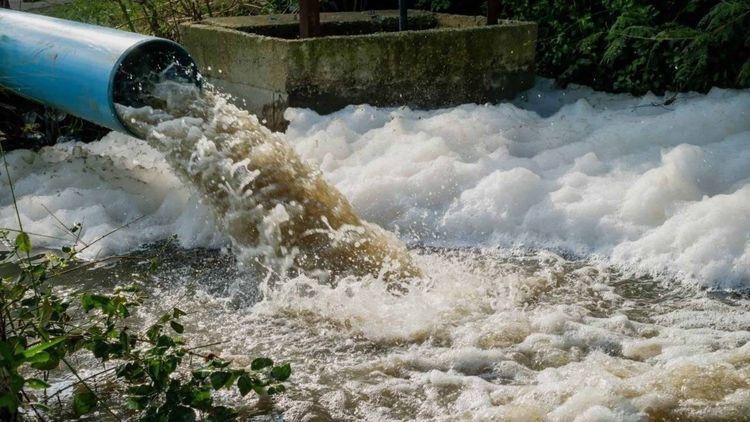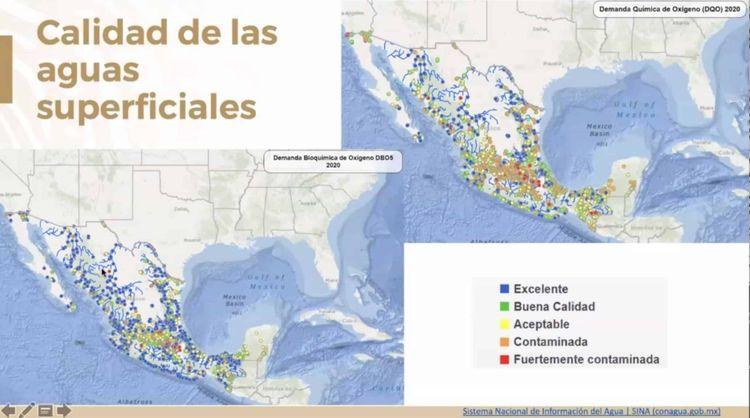After 25 years, the issue of wastewater in Mexico is taking a step forward. The update of the Official Mexican Standard (NOM-001-SEMARNAT-2021) that establishes the limits of pollutants from wastewater discharges in the nation's waters, such as rivers, lakes and seas, will replace the one issued in 1996.
The update breaks through disagreements on the part of the industrial sector, which will have to carry out the modifications. The main complaint is regarding economic damages in the face of a decision that they define as unilateral.
However, for environmental organizations and specialists in the sector, the update, which should have been carried out periodically every five years, is necessary in a country with 70% of surface water contaminated or heavily contaminated, according to Omar Arellano Aguilar, a specialist in Ecotoxicology at the National Autonomous University of Mexico (UNAM).
“What this amendment to the standard does is improve standards in wastewater treatment. This is important because not updating them put us in a vulnerable situation considering all the advances that have taken place both in pollutants and in technology,” explained Anaid Velasco, Research Coordinator of the Mexican Center for Environmental Law (CEMDA).
In an interview with Causa Natura, Velasco states in a nutshell that what this rule will do is “try to catch up”. And although he recognizes that there is an initial investment cost to take the technological step, there are also incentives, including tax incentives, such as deducting the taxable base when buying environmentally friendly machinery.
NOM-001 was approved by the Ministry of Environment and Natural Resources (Semarnat) on August 27. Although it is still expected to be published in the Official Gazette of the Federation, which has no fixed date.
The main modifications range from changes in the wording of your objective to parameters of color, temperature, Chemical Oxygen Demand (DOQ) and toxicity.
“The technical limits of the current standard are not only obsolete, but they also do not correspond to the current problem of water quality in Mexico, thus violating the human right of the population to have quality water, as well as to its sanitation,” Semarnat shared in a statement.
Semarnat has been intending to update NOM-001 since 2007. In other words, the possibility of a modification has been mentioned 14 years ago.
“The industry, being as far-sighted as it is, could have planned within its budgetary programs to allocate a little. My reading is that perhaps they were confident that the update was not going to be given. I don't see it as much as an abrupt jump,” Velasco said.

Source: Mexican Institute of Water Technology (IMTA)
Companies vs. modifications
The news of the NOM-001 update was not positive for everyone. The Confederation of Industrial Chambers (Concamin), the Business Coordinating Council (CCE) and the Employers' Confederation of the Mexican Republic (Coparmex) took a stand against the process.
These industrial-business organizations argued that the modifications were not consulted; that the change of their water treatment plants will result in economic damage due to their high cost; even, that it violates the provisions of the Treaty between Mexico, the United States and Canada (T-MEC).
When asking the CEMDA Research Coordinator about the opposing arguments, mainly the one referring to the T-MEC, she replies that she does not understand the justification.
“For example, in chapter 24 of the Treaty, which deals with the environmental aspect, while respecting the sovereignty of each country to establish its standards in environmental terms, it also mentions that these must seek to be increasingly progressive for the benefit of the environment and, in addition, that they should not be lowered just to attract more investment,” said Anaid Velasco.
Regarding participation, Velasco indicated that since 2017 the first draft has been carried out, which was submitted to public consultation. Anyone interested in the topic, regulated or not, could participate.
But what are the modifications to NOM-001 and why are they controversial? Norma Ramírez Salinas, Water Treatment and Quality Coordinator of the Mexican Institute of Water Technology (IMTA) explained at a conference held on September 10 that one of the main changes will be in the way organic matter in water is measured. Specifically, those with chloride concentrations greater than 1,000 milligrams per liter.
In these cases, the Chemical Oxygen Demand (COD) parameter will enter, which allows bacteria and fungi to be measured under specific oxidizing agent, temperature and time conditions that could not be detected with Biochemical Oxygen Demand (BOD).
“BOD is easily biodegradable and COD is the chemically oxidizable fraction, that is, what is not easily biodegraded was incorporated, such as toxic organic compounds, particulate matter and inorganic matter, among others,” Ramírez Salinas explained.
In addition, faced with the argument of the industrial sector that the COD is not measured in other countries, the IMTA Coordinator presented a table with regulations from other countries that were taken for the revision of NOM-001, such as China, Germany, Spain, Costa Rica, Ecuador, Argentina, Panama and Paraguay.
“It's not something that isn't done at the international level. I think that rather we (Mexico) are lagging behind,” he said.
Two other important modifications are the introduction of true color and toxicity parameters. For example, in the case of color, it was on the Platinum-Cobalt scale, which is for detecting the colors of the yellow-brown palette, but it is not the effective method for measuring in shades of blue, red, purple or black and many others that are used in various industrial fields, mainly textiles.
Measuring true color, not just the apparent color as indicated by NOM-001-SEMARNAT-1996, reverses damage that prevents light penetration, leading to a reduction in the rate of photosynthesis and dissolved oxygen levels, in addition to affecting aquatic flora and fauna.
For its part, the toxicity parameter will serve as a means of warning to avoid a large amount of substances that are currently discharged into bodies of water without being characterized or regulated.
“Sometimes we can say that a process doesn't cause toxicity, maybe not, but we've thought about mixing them all together when they go into discharges. The mixture does cause toxicity for us. Reviewing these options allows us to know if something else is happening that we don't notice just by measuring metals,” said Ramírez Salinas.
Some other relevant modifications are the reduction of the pH and temperature range, the elimination of floating matter and sedimentable solids, the introduction of instantaneous value in the measurement of parameters and the classification of receiving water bodies.

On the left, the map is shown under parameters of the 1996 standard; on the right, an overview closer to reality, including the new modifications to NOM-001 such as the COD. Source: IMTA
Costs and pending actions
Last September, the National Association of Water Entities (ANEAS) issued a statement in which it assessed that the cost for implementing NOM-001 will be 700 billion pesos. Although SEMARNAT had estimated an investment of only 70 billion pesos in 2017.
“It's not something we don't know, there will be an increase in monitoring costs, but not all the pollutants covered by the standard will have to be permanently monitored,” explained Norma Ramírez Salinas of the IMTA.
According to the Coordinator, in the Official Standard there is a section that indicates that the discharge of a treatment plant can be monitored for 6 months and if this results in a study showing that there is no contamination, there may be an exemption.
Anaid Velasco mentions that in order to achieve an agreement that allows compliance with NOM-001, it will be necessary to have programs or public policies that serve as incentives. Measures that should focus on small and medium-sized business sectors, rather than large industries.
“There is a point in that argument (about costs), but it's not something that is insurmountable to object to the existence of the norm,” he added.
Other important issues that the CEMDA Coordinator focuses on is a future revision of NOM-002, which regulates the release to municipal drainage, and which has also not been updated for 25 years. As well as the promotion and obligation of the reuse of greywater.
“We also need to design financial schemes to enable the economic resources necessary for this modernization, which is not only technological, but also of thought,” concluded the IMTA.



Comentarios (0)